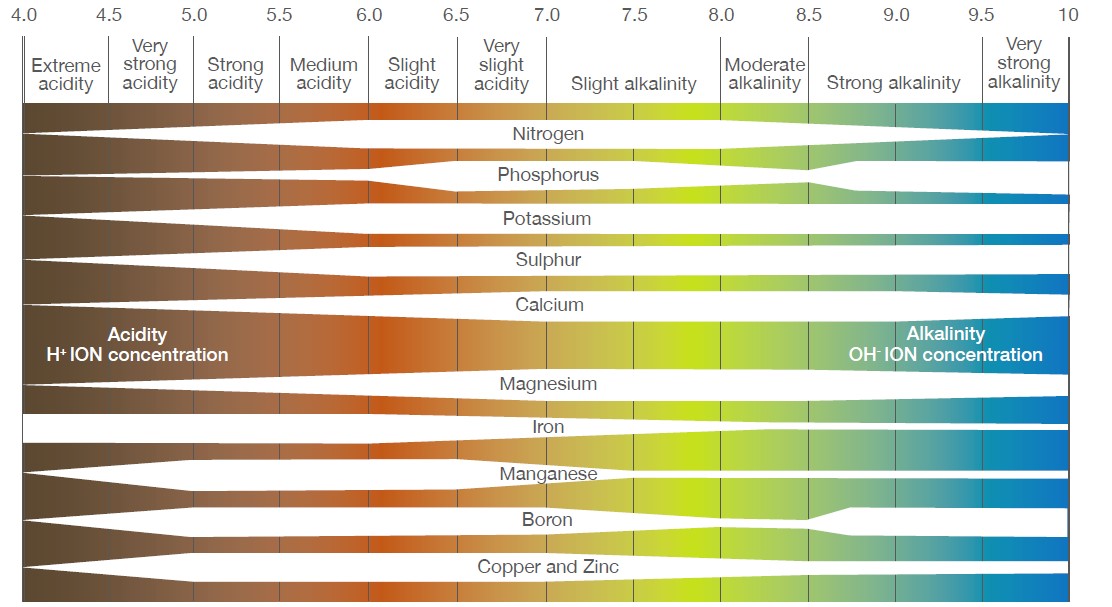- Home
- Knowledge library
- Liming for a grassland reseed
Liming for a grassland reseed
Find out why lime is important for a grassland reseed and the influence on nutrient availability.
Back to: Preparing to reseed grassland
Why is lime important?
Soil pH has a strong influence on the availability of nutrients in soil. Reseeding provides a perfect opportunity to correct pH imbalances and gives the new ley the best chance of establishment. Over time, grassland soils have a tendency to become more acidic, due to rainfall, decay of organic matter and fertiliser. Data taken from across the UK shows that 57% of grassland soil samples are below pH 6.0, which has knock-on effects on nutrient availability.
Nutrient availability
The optimum availability of most plant nutrients in soil occurs over a small range of soil pH values. For continuous grassland, pH values between 6.0 and 7.0 are thought to be sufficient to maximise nutrient uptake. There is limited evidence to justify increasing the pH beyond 6.5.
Lime is important in minimum-till reseeding because it neutralises the organic acids released by the old sward as it decays.
The availability of nutrients at a range of pH

Lime recommendations per hectare
The amount of lime required will depend on the current:
- Soil pH
- Soil texture
- Soil organic matter
- Optimum pH needed
Typically, clay and organic soils require more lime than sandy soils. An online calculator is available to calculate field lime requirements.
Lime recommendations in terms of tonnes of lime (NVSO) to apply per hectare
|
Initial soil pH
|
Sands and loamy sands |
Sandy loams and silt loams |
Clay loams and clays |
Organic soilsa |
Peaty soilsb |
|||||
|
Arable |
Grass |
Arable |
Grass |
Arable |
Grass |
Arable |
Grass |
Arable |
Grass |
|
|
Liming Factor |
||||||||||
|
|
6 |
4 |
7 |
5 |
8 |
6 |
8 |
6 |
16 |
12 |
|
t/ha |
||||||||||
|
6.2 |
3 |
0 |
4 |
0 |
4 |
0 |
4 |
0 |
0 |
0 |
|
6.0 |
4 |
0 |
5 |
0 |
6 |
0 |
6 |
0 |
0 |
0 |
|
5.5 |
7 |
3 |
8 |
4 |
10 |
4 |
10 |
4 |
8 |
0 |
|
5.0 |
10 |
5 |
12 |
6 |
14 |
7 |
14 |
7 |
16 |
6 |
a For mineral and organic soils, the target soil pH is 6.7 for continuous arable cropping and 6.2 for grass.
b For peaty soils, the target soil pH is 6.0 for continuous arable cropping and 5.5 for grass.
To estimate the lime recommendations (in t/ha of ground limestone or chalk), multiply the liming factor for each soil type and land use combination by the difference between the initial (measured) and target soil pH.
Useful links
Nutrient Management Guide (RB209)
If you would like to order a hard copy of the Nutrient Management Guide (RB209), please contact:
Email: publications@ahdb.org.uk
Telephone: 0247 799 0069
Topics:
Sectors:
Tags:

